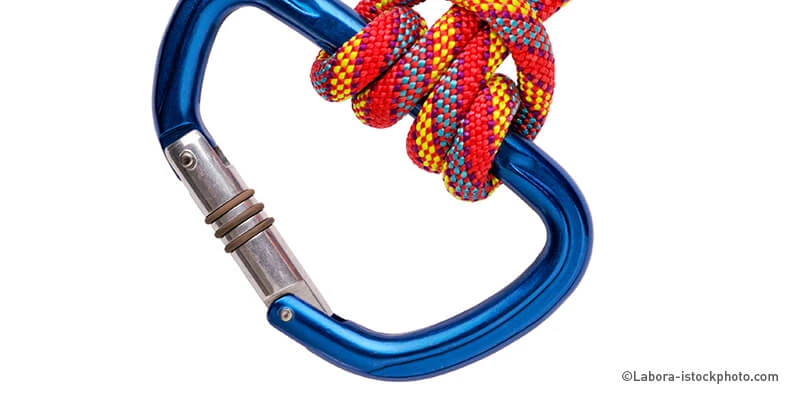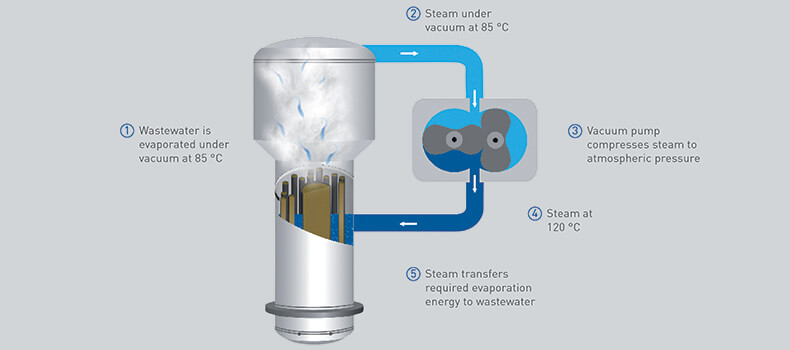联系
周年纪念
The process of anodising is a widely used in the surface treatment of aluminium to achieve the best possible coating results. The individual process steps produce a wide variety of wastewaters that require targeted treatment. The vacuum distillation process is an efficient and, above all, sustainable solution.
When aluminium is anodised a stabilising hard oxide layer forms on the metal product being treated, creating a durable surface. This protects the product from weathering, corrosion and cracking.
Today the anodising process is used in a wide variety of industrial sectors. These include aviation, the construction industry and medical technology, but also areas such as the manufacture of sports equipment. Here the process is used for decorative purposes due the glossy, attractive surface that results.
 The process is also used in the production of high-quality sports equipment.
The process is also used in the production of high-quality sports equipment.
The anodising process usually consists of five process steps. The first step is the chemical pre-treatment. Here the parts are degreased using an alkaline. This is usually followed by an acidic pickling. Finally, careful rinsing with deionised water is necessary.
The next steps are selected according to the desired properties that the parts are to have. For example, if a gloss effect is desired the parts are dipped into an appropriate bath at this point.
The actual anodising is then carried out, for example, using a direct current sulphuric acid process. The electrochemical process generates oxygen that bonds directly to the surface of the aluminium producing aluminium oxide.
The aluminium oxide formed in this way can absorb pigments or other substances immediately after anodising, enabling the creation of an individual metallic coloration.
The last step is the sealing. The sealing process, in which the pores in the layer are compacted, transforms the surface into a closed layer. This is not only highly corrosion-resistant, but also dirt-repellent and it retains its colour for a considerable time.
The parts are carefully rinsed after each individual work step. This produces a wide variety of different wastewater that needs to be treated. The wastewater is often discharged into industrial wastewater. This is usually preceded by a chemical-physical treatment. One of the problems encountered here is the large amount of maintenance required and the extensive space required by these plants. Another is the obligation to comply with the statutory limits on the water discharged. Problems often result in the heavy metal or nitrite concentrations being too high. The vacuum distillation process does not produce any wastewater and consequently there is no discharge.
|
About H2O GmbH |
|
The experts for zero liquid discharge production H2O GmbH are specialists in the field of treatment and recirculation of process water and industrial wastewater. For this purpose, we supply machines and plants as well as complete expert advice. The core products are VACUDEST series evaporators. Further information concerning VACUDEST technology can be found at www.h2o-de.com. |
The resulting rinsing water from the anodising process is generally very well suited for treatment using a vacuum evaporator.
Vacuum distillation is based on the simple principle of separating substances according to differences in their boiling point - the industrial wastewater is evaporated. All substances which have a higher boiling point than water remain in the evaporation residue. These include heavy metals, salts, oils, fats or surfactants. Because the water content is evaporated, the residue is reduced to 0.5 to 5 percent of the original volume. The rising water vapour is almost free of impurities.
The quality of the distillate obtained is so good that it can be reused in the production process and recycled.
However, the quantity of rinse water must always be taken into account. For larger quantities of water, pre-treatment may be recommended or even necessary. Ion exchangers or the reverse osmosis process are suitable for this purpose.
Smaller quantities are usually produced by specialised industrial companies such as the aviation industry, which limit themselves to always anodising the same parts. As a rule the treatment of rinse water is uncomplicated and in the ideal situation recirculation is possible.
 Functional principle of vacuum distillation.
Functional principle of vacuum distillation.
A vacuum distillation system offers the user environmental and economic advantages as a result of the recirculation process. The demand on fresh water resources can be significantly reduced and a large part of the disposal costs can be eliminated if the water can be recovered for production through a sustainable treatment. This means that the investment usually pays for itself in less than two years.
Anodising of aluminium is an increasingly important process in surface technology. This is partly due to the longevity given to the parts by the process. The decorative aspect also plays a role, however, as in addition to an attractive gloss finish, a diverse colour range is also possible.
Sooner or later, companies will be forced to address sustainable and economical solutions when treating the rinse water they produce. On the one hand, the contribution of industry to the protection of our environment is becoming increasingly important, on the other hand enormous costs can be saved through the implementation of water recirculation.
The most convenient solution is vacuum distillation. The water can be treated efficiently and safely without much outlay and ideally can even be reused in the production process.
您对我们的VACUDEST系统感兴趣?
欢迎您和我们联系!
联系电话:
陆献君 (Ricky Luk)
销售顾问
电话: +86 512 3685 38-10 - 819
ricky.luk@h2o-de.com
您需要购买耗材, 配件, 或者预约检修?
我们期待为您服务!
联系电话:
周晓莉 (Shirley Zhou)
出纳
电话: +86 512 368538-10 820
shirley.zhou@h2o-de.com
您想加入我们的团队, 与我们一起共同塑造零污水的未来吗?
请与我们的人力资源部门联系!
Ihr Ansprechpartner:
Bettina Böhringer
女士
+49 7627 9239-201
career@h2o-de.com